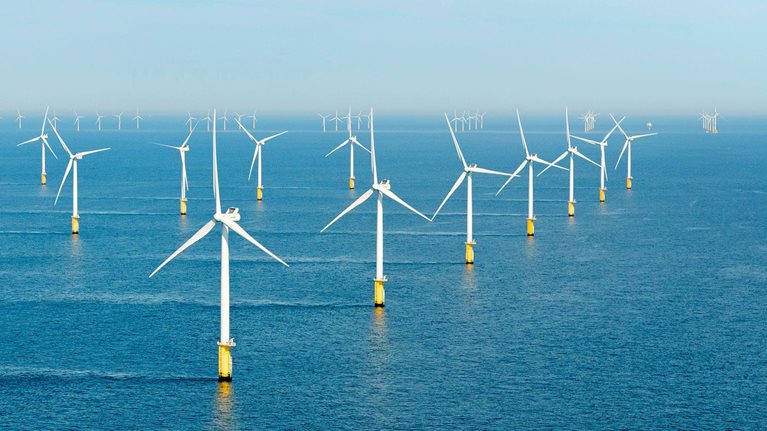McKinsey & Company’s energy practice recently conducted a survey to find out more from customers about their recent energy utility experiences and to gauge their interest in new products and services. More than 10,000 respondents across six western European countries (France, Germany, Italy, Spain, Sweden, and the United Kingdom) were surveyed in April 2023. The results highlight areas on which energy retailers could concentrate to retain customers this summer.
For the purposes of this article, we focus only on UK energy retailers and customers.
Winds of change in the UK energy retail market
The United Kingdom has been through a period of record-low energy retailer switching rates in the last 18 months (less than 3 percent across 2022 and end of the second quarter 2023, down from 21 percent in 2019).1 The UK government has been capping the maximum rate2 for customers since 2019, which has helped maintain affordability and protected vulnerable customers. As a result of this intervention, the incentive to switch retailers—that had been unable to offer lower-priced tariffs—dropped.
A new price cap has recently been announced by the UK energy regulator, Ofgem, which will lower energy bills to £1,923 a year for the typical household, effective from October.3 This new price cap reflects how wholesale energy prices have continued to fall throughout summer 2023.
As retailers begin to offer lower tariffs, customers have the opportunity to shop around and switch to the most attractive providers—making this a crucial time for energy retailers to retain customers and acquire new ones (Exhibit 1). In addition, customer attitude and engagement with energy is changing—historically, it was viewed as a commodity with a low level of engagement. Now, though, with new products, gamification of services, and more attractive pricing, customers are more aware of the choices offered to them; another reason for retailers to differentiate by optimizing cost and decarbonizing power.

Energy retailers are part of an energy market that is moving to decarbonization—electrification is seen as the leading pathway to meeting the UK’s energy security goals, and Ofgem is putting regulations in place to enable a flexible, net-zero grid with its electricity generated by renewable infrastructure and consumed by newly electrified end-use assets.4 Annual electricity consumption is estimated to at least double between now and 2050, and this requires a rapid transformation in the products and services that enable this energy transition.5
About one-third of UK residential customers are considering switching their energy provider
Of the 2,070 UK customers surveyed, 32 percent said they are currently considering switching energy providers, highlighting why now is the time for retailers to take action to retain customers and attract new ones. The two biggest drivers for customers wanting to make a move are competitive prices and poor customer service (Exhibit 2).

Digital disruptors are powering ahead
Survey results reveal that the retail players that have best met customer needs are the “digital disruptors.” These retailers have the lowest percentage of customers intending to switch and are at the top of the list of providers to which unsatisfied customers are considering moving. Digital disruptors stand out with an expected customer churn at approximately half that of the remaining energy providers, thus doubling their expected customer lifetime value. Legacy retailers will likely need to fast adapt or face losing out to digital disruptors—by learning from these digital retailers’ successes, legacy players could accelerate their plans to innovate and compete.
According to survey responses, digital disruptors’ success lies in their digital platforms that not only provide better customer experiences, but also enable retailers to achieve a lower cost-to-serve and thus better tariff pricing. This has led to strong market share growth (12.7 percent CAGR) over the past five years.6
In addition, many digital disruptors are embracing AI, using tools like machine learning to transform customer experience, which is resulting in improved work flows. As an example, a leading UK energy provider used AI to answer customer emails—AI successfully replied to over 30 percent of them with an 80 percent customer satisfaction rate, thus reducing costs.7
The next generation of energy retail will see innovations in products as well as service
Digital disruptors have successfully innovated to deliver service improvements—but without directly innovating on household energy products. For the United Kingdom to meet its net-zero targets, however, there needs to be innovation in both services and products. This will likely be the next growth vector in energy retail, and the digital disruptors have already set to work to capture the opportunity by raising customer awareness about new products and services that enable behind-the-meter flexibility and energy management to further reduce bills.
Enabling a more flexible grid benefits customers while decreasing the burden on an electricity grid already in need of significant investment to keep up with the rapid increase in electricity consumption (driven by decarbonization goals). These infrastructure upgrades would otherwise be passed onto customers through policy charges on their bills.
Would you like to learn more about our Electric Power & Natural Gas Practice?
Customers are willing to explore buying products and services beyond energy
Customers indicate that they are open to buying new products and services from their current energy retailer that will help them reduce consumption. Here, energy retailers have opportunities to offer value to current customers by approaching those who are willing to change their service provider to their energy retailer—more than 25 percent of respondents said they would be willing to convert a service they are currently buying from a third party to their current energy retailer (Exhibit 3).

Energy providers could look at how to bundle offerings with additional energy services such as energy management, maintenance services, selling and maintaining heat pumps, and installing batteries and electric vehicle battery chargers. Survey results reveal there is already a handful of early retail leaders with two to three times’ higher levels of cross-selling than their competitors, which has been shown to increase stickiness and reduce customer churn.8
Our research suggests that the percentage of customers who show willingness to convert a service (presently more than 25 percent) could increase dramatically if energy providers were to tackle cost concerns, increase customer awareness, and simplify processes (Exhibit 4). Retailers with success in leading customers to new offerings have run awareness campaigns and educated the public through their digital channels (with simpler user interfaces).

Customers are also open to time of use tariffs, which will be enabled by green energy products and a smarter grid
We asked respondents to indicate their interest in new commercial offerings beyond additional products and services. The strongest willingness to subscribe is shown for partial time of use (ToU) tariffs (49 percent), ToU tariffs with warnings (48 percent), and new loyalty schemes (46 percent).9 This openness, however, only comes when the new commercial arrangements are directly linked to the ability to reduce energy bills for the customer (Exhibit 5).

Even with this willingness among approximately half of UK customers, there is a segment of customers who understand ToU could reduce bills but still would not switch—of those surveyed, 63 percent think ToU tariffs could reduce their bills, but only 49 percent would be willing to move to this arrangement. Of those surveyed, 66 percent agree that ToU tariffs are easy to understand, however only 44 percent concur that this tariff makes them feel safer with their energy supply, highlighting that UK households are reluctant to take on risk in their energy bills in light of the energy crisis.
The United Kingdom currently looks set to move toward a greater adoption of ToU tariffs as the National Grid prepares for more electricity to come from renewables. Between November 2022 and March 2023, the National Grid ESO’s Demand Flexibility Service (DFS) ran demonstration trials, testing the ability for demand aggregators to reduce power consumption and provide extra flexibility when national demand is at its highest.10 These trials indicate that the electricity generator, aggregator, and retailer ecosystem could move to a smarter, more responsive grid system. To stay at the forefront of the more flexible UK electricity grid, first-mover retailers will set up ToU tariffs that enable them to better compete on customers’ energy bills.
A cohesive strategy: Happier customers, a more flexible grid, and greener homes
As the UK energy retail market opens up, players that are at the forefront of the trends highlighted by our survey may be best positioned to acquire and retain new customers and build a highly competitive retail business. However, there are factors to consider: the regulator and the end consumers are grappling with the dilemma of balancing the pace of decarbonization with the affordability challenge. During the crisis, energy started to take up more of already-stretched households’ income, which triggered the government intervention. Considering the cost of renewable technologies—driven by higher interest rates and supply chain constraints—and the limited investment capacity of the already strained household budgets, this is a difficult balancing act.
Addressing this challenge and enabling adoption is the next frontier in terms of customer offering, and competition between energy retailers and every player is trying to roll out leasing and capex to opex business models.
The findings of our survey suggest that the best way to achieve both is to shift mentality and adopt an umbrella strategy that offers new products and services to provide value for all parties involved—reducing costs across the whole value chain by enabling the decarbonization transformation, which ultimately translates to lower costs (and a lower carbon footprint) for end customers.
To this end, we have identified a three-pillar, cohesive strategy that energy retailers could action to stay ahead in the challenging energy environment. All three pillars could ensure that customers become more engaged—and that creates brand loyalty and stickiness. When customers feel a more positive, emotional connection, they are more likely to stay with their retailer and adopt new products and services.
Pillar 1: Ensure customer satisfaction
Achieving a low cost-to-serve and superior customer service experience is no longer a differentiator, it’s the minimum ticket to play. Energy retailers could drive high customer satisfaction through low cost-to-serve digital channels that reduce churn and increase profitability. In addition, they could adopt AI to help fundamentally transform the customer-experience journey—resulting in satisfied incumbent customers and attracting new ones.
Further, by delivering great service and building customer trust, energy retailers may be positioned to lead the way in selling new products and commercial offerings that will accelerate the UK’s progress in decarbonizing residential heating. Retailers that believe a ToU offering can deliver upside and grab the market quickly may have significant advantage—those selling green energy products that enable a ToU tariff could deliver lower bills to UK households, but also increase incremental revenue; a virtuous cycle needed for a successful energy transition.
Pillar 2: Offer green energy products
As part of the move to become more environmentally friendly, customers are starting to look for greener products, and retailers could increase their offerings in new products and services such as solar panels, heat pumps, EV chargers, and energy management services. As our survey results show, 25 percent of customers are open to buying products and services such as these directly through their energy retailer, and are attracted to the idea of behind-the-meter flexibility that reduces energy bills.
In the past, selling additional products was mainly viewed as a means to increase customer stickiness and reduce churn. However, as the United Kingdom decarbonizes, green energy products may become the critical enabler for retailers to offer lower bills to customers in combination with new commercial arrangements.
Pillar 3: Encourage ToU tariffs
Energy retailers could incentivize customers to adopt new commercial offerings that bring customers’ bills down. The keys to success here may be selling tariffs to ideal target customers with green energy products already installed in their homes, as well as developing well-designed, easy-to-understand, flexible ToU tariffs.
Our survey has highlighted what customers want, and offers UK energy retailers insights on the path forward. The pillared approach ensures that customers are more engaged. Digital disruptors can further innovate; legacy players can accelerate their transformations. By adopting a holistic strategy, energy retailers can not only take part in the vital decarbonization of UK homes, but also reduce churn, increase lifetime, and create value—starting with the end customers themselves.


